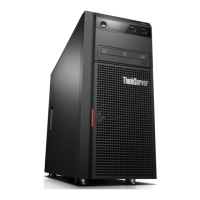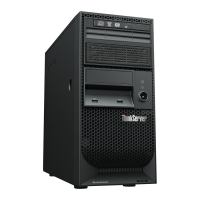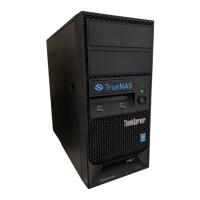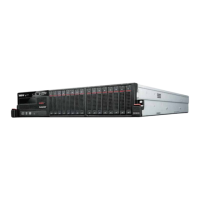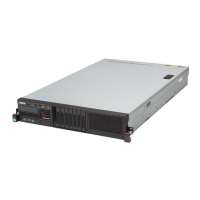Chapter7.Troubleshootinganddiagnostics
Thischapterprovidesinformationaboutbasictroubleshootinganddiagnosticmethodstohelpyousolve
problemsthatmightoccurintheserver.
Ifyoucannotdiagnoseandcorrectaproblembyusingtheinformationinthischapter,seeChapter8
“Gettinginformation,help,andservice”onpage181
foradditionaltroubleshootingresources.
Troubleshootingprocedure
Usethefollowinginformationasageneralprocedurefordiagnosingandtroubleshootingproblemsyou
experiencewithyourserver:
1.Verifythatthepowercordsandthecablesforallattacheddevicesareconnectedcorrectlyandsecurely.
2.Verifythattheserverandallattacheddevicesthatrequireacpowerareconnectedtoproperlygrounded,
functioningelectricaloutlets.
3.VerifythatallinstalledhardwareandattacheddevicesareenabledintheBIOSsettingsofyourserver.
FormoreinformationaboutaccessingandchangingtheBIOSsettings,see“UsingtheSetupUtility
program”onpage57
.
4.ViewthestatusanddiagnosticLEDstoidentifythesystemanddevicestatusanddiagnoseproblems.
See“ViewingthestatusanddiagnosticLEDs”onpage175
.
5.Iftheserverisnotworkingafteryouhaveaddednewsoftware,installedanewoptionaldevice,or
replacedapieceofhardware,removeorreinstallthesoftwareordevicetoseeiftheproblemcould
besolved.
6.ViewtheSELtodiagnoseproblems.See“Viewingthesystemeventlog”onpage175.
7.TurnontheserverandpressEscassoonasyouseethelogoscreentoviewanydiagnosticmessages.
8.Referto“Basictroubleshootingtables”onpage176andfollowtheinstructionsforthetypeofproblem
youareexperiencing.Ifthebasictroubleshootinginformationdoesnothelpyouresolveaproblem,
continuewiththenextstep.
9.Tryusingapreviouslyservercongurationtoseeifarecentchangetohardwareorsoftwaresettingshas
causedaproblem.Beforerestoringyourpreviousconguration,captureyourcurrentcongurationin
casetheoldercongurationsettingsdonotsolvetheproblemorhaveadverseeffect.
10.Useanantivirusprogramtoseeifyourserverhasbeeninfectedbyavirus.Iftheprogramdetectsa
virus,removethevirus.
11.Ifnoneoftheseactionssolvetheproblem,seektechnicalassistance.SeeChapter8“Getting
information,help,andservice”onpage181.
ViewingthestatusanddiagnosticLEDs
YourserverhasstatusanddiagnosticLEDsonthefrontpanel,theDITpanel(variesbymodel),therear
panel(EthernetstatusLEDs),thesystemboard,thehot-swapharddiskdrives(ifsupported),andtheoptical
drive(s).ThevariousLEDshelpyoueasilyidentifythesystemanddevicestatusanddiagnoseproblems.For
informationabouttheLEDs,refertotherelatedtopicsin“Locations”onpage13
.
Viewingthesystemeventlog
Thesystemeventlog(SEL)containsinformationaboutallthePOSTandsystemmanagementinterrupt(SMI)
events.YoucanviewtheSELtodiagnosesystemproblems.
©CopyrightLenovo2011,2012
175

